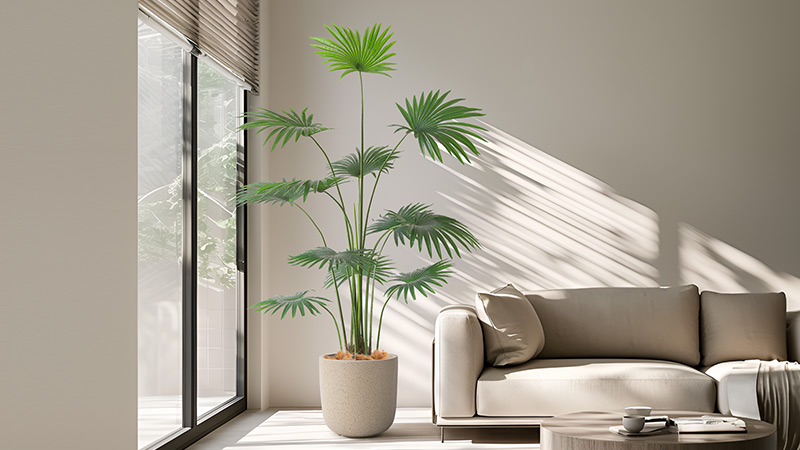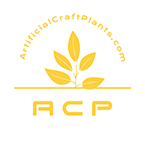Artificial plants are no longer just a substitute for real greenery—they’re a design statement. As global demand for high-quality faux plants grows Market Research Future: Artificial Plants Market1, buyers are looking beyond basic designs to more sophisticated, hyper-realistic, and customizable options.
What trends will shape the artificial plant industry in 2025?
This guide explores the latest innovations, market shifts, and design trends set to dominate the international artificial plant market.
The 2025 Artificial Plant Market: What’s Driving Change?
Several factors are influencing the evolution of artificial plant design:
- Sustainability Concerns – Eco-conscious consumers are demanding recyclable and non-toxic materials Bloomist: Introducing EcoFaux Artificial Botanicals2.
- Commercial & Residential Boom – Hotels, offices, and luxury homes are embracing lifelike greenery for long-term use Designer Plants: Why Use Artificial Plants for Hotels?3.
- Technological Advancements – 3D printing, color-blending techniques, and UV protection are making artificial plants more realistic than ever DYArtificial: Leading China Artificial Plants Factory4.
- Customization Demand – Businesses want tailor-made greenery that fits specific branding and design aesthetics Sunwing: Custom Plants5.
2025’s Top Artificial Plant Design Trends
1. Hyper-Realistic Textures & Finishes
Forget stiff plastic leaves—2025’s artificial plants will mimic real plants down to the finest details New York Magazine: Best Artificial Plants6.
-
Multi-tone coloring – No more flat greens; expect gradient shading, natural imperfections, and realistic vein detailing.
-
PU & PE blends – These materials will continue to dominate for soft-touch, flexible, and high-durability designs.
-
Hand-painted finishes – Enhancing the realism of stems, branches, and bark textures.
-
What to Look for:
- Soft-touch PU or PE leaves with natural gloss and flexibility.
- Non-uniform shapes that replicate real plant growth.
2. Biophilic Design Influence
As businesses prioritize well-being and sustainability, biophilic design—integrating nature into interiors—will drive artificial plant trends Benholm: The Truth About Artificial Plants7.
-
Large statement trees – Think oversized fiddle leaf figs, olive trees, and traveler’s palms.
-
Artificial moss walls & vertical gardens – Blending faux and real elements for a natural aesthetic.
-
Lifelike hanging plants – Cascading greenery like pothos, ferns, and ivy for dynamic interior designs.
-
What to Look for:
- UV-treated plants for indoor-outdoor versatility.
- Natural wood or stone-based planters for an earthy, organic feel.
3. Sustainable & Eco-Friendly Materials
With sustainability at the forefront, 2025 will see a shift toward recyclable, biodegradable, and non-toxic artificial plants Afloral: Sustainability8.
-
Recyclable PE & PU – Reducing environmental impact while maintaining quality.
-
Non-toxic colorants – Avoiding lead-based dyes and harmful chemicals.
-
Bio-based materials – Innovations in plant-based plastics and sustainable fibers.
-
What to Look for:
- Certification for non-toxic, eco-friendly materials (REACH, RoHS, etc.).
- Recyclable or biodegradable packaging from suppliers.
4. Smart & Interactive Artificial Plants
Technology is stepping in to make artificial plants more functional and immersive Smart Plant Ivy9.
-
Light-responsive foliage – Leaves that subtly change color under different lighting.
-
Integrated air-purifying systems – Combining faux plants with real moss filters.
-
App-controlled ambiance – Smart planters with LED lighting or humidity sensors.
-
What to Look for:
- Customizable tech-enabled designs for hotels, offices, and high-end residences.
- Multi-functional décor pieces that blend tech with greenery.
5. Customization & Bespoke Artificial Greenery
One-size-fits-all designs are fading—2025 is all about tailored greenery Feelreal: Custom Plants10.
-
Custom-built artificial trees – Designed to fit unique architectural spaces.
-
Brand-colored foliage – Perfect for hotels, retail stores, and event planners.
-
Mixing artificial & preserved plants – Creating a hybrid look with real and faux elements.
-
What to Look for:
- Suppliers offering custom sizing, colors, and leaf shapes.
- Handcrafted botanical replicas for ultra-realistic designs.
Common Myths About Artificial Plant Trends
"Artificial plants are outdated compared to real greenery."True
False! The latest faux plants are indistinguishable from real ones and offer long-term benefits Designer Plants: Why Use Artificial Plants for Hotels?[3].
"Only indoor spaces need artificial plants."False
False! Outdoor artificial plants with UV resistance are booming in demand for commercial and residential use Nearly Natural: Outdoor UV Resistant Faux Trees and Plants[11].
"Eco-friendly artificial plants don’t exist."False
False! Recyclable PE and non-toxic PU are already hitting the market, reducing environmental impact Bloomist: Introducing EcoFaux Artificial Botanicals[2].
Conclusion
2025 is set to redefine artificial plant design with hyper-realistic finishes, biophilic influences, sustainability innovations, and smart technology. B2B buyers should focus on premium materials, customization options, and eco-friendly alternatives to stay ahead in the international market. Elevate your offerings beyond basic—and embrace the future of artificial greenery!
-
Explanation: Provides detailed data on global artificial plant market demand, sourced from a market research report. ↩
-
Explanation: Introduces eco-friendly practices using recycled plastics and biodegradable materials in artificial plants. ↩
-
Explanation: Discusses the benefits of artificial plants in hotel settings, supporting their modern utility. ↩
-
Explanation: Highlights UV protection and flame-retardant technologies in artificial plant manufacturing. ↩
-
Explanation: Showcases custom sizing, colors, and leaf shapes offered by a supplier, supporting customization trends. ↩
-
Explanation: Lists highly realistic artificial plant products, reinforcing hyper-realistic design trends. ↩
-
Explanation: Explores the role of artificial plants in biophilic design for sustainable interiors. ↩
-
Explanation: Emphasizes the use of recycled fabrics and bio-based plastics, supporting eco-friendly material trends. ↩
-
Explanation: Demonstrates smart planters with AI chips and sensors, aligning with interactive plant trends. ↩
-
Explanation: Provides examples of custom artificial plant services, reinforcing bespoke greenery trends. ↩

Hello everyone, I'm Li!By day, I'm a seasoned expert in the artificial plant industry, starting from the factory floor and working my way up to running my own successful business. In my free time, I’m passionate about running and often join trail runs with friends.Here to share what I've learned—let's grow together!



